The Lowdown
The Canon EOS R50 Content Creator Kit is targeted at vloggers and content creators looking to step up from their smartphones, and it fulfills its mission beautifully. Its light weight and compact size make it the perfect travel companion. Its APS-C sensor and interchangeable lenses give it the added quality and abilities that users looking for the next level seek.
Overall
Pros
- One of the smallest, lightest, and least expensive EOS R Cameras
- Excellent photo and video quality matching some Canon models that cost twice as much
- Social media and vlogging features
- Ease of use
Cons
- The body is almost too small for use with many RF, EF, and EF- S lenses
The Canon EOS R50 is a compact, lightweight, mirrorless camera aimed at content creators looking to improve their game. It has many advanced features and some very impressive specifications. It is the culmination of marrying an RF-S Mount version of the Canon M50 with the sensor and processor from the R10. The result is one of the lightest mirrorless cameras on the market, with a 24.2MP APS-C sensor and the ability to shoot full-width 4K. Combined with the social media-friendly shooting modes, the R50 is well-suited for content creators ready to challenge the limits of their smartphones.
The Canon EOS R50 Content Creator Kit ships with the RF-S18-45mm F4.5-6.3 IS STM, a small, lightweight, and versatile lens that contracts to a very compact size with a click of the zoom ring. The kit also includes the lightweight Canon Tripod Grip HG-100BTR with a built-in detachable Bluetooth-enabled remote and a Canon Stereo Microphone DM-E100 with a removable windscreen.
[Click any photo to open a gallery.]
The Canon EOS R50 Content Creator Kit Includes:
- Canon EOS R50 Mirrorless Camera (Black)
- Canon LP-E17 Lithium-Ion Battery Pack
- Canon LC-E17 Charger for LP-E17 Battery Pack
- Canon R-F-5 Camera Cover
- Canon EM-200DB Neck Strap
- Limited 1-Year Manufacturer Warranty
- Canon RF-S 18-45mm f/4.5-6.3 IS STM Lens
- Canon E-49 Lens Cap
- Canon Lens Dust Cap RF
- Limited 1-Year Manufacturer Warranty
- Canon DM-E100 Directional Microphone
- Windscreen
- Limited 1-Year Manufacturer Warranty
- Canon HG-100TBR Tripod Grip
- Canon BR-E1 Wireless Remote Control
- Wrist Strap
- Microphone Attachment L
- Microphone Attachment S
- Limited 1-Year Manufacturer Warranty
The Canon EOS R50 Mirrorless Camera
After researching the R50 online, I was surprised to see just how small the body is compared to what I had envisioned from the photos. As this photo illustrates, the EOS R50 is about halfway between a point-and-shoot camera and a DSLR (Olympus XZ-1 and Canon 6D Mark II shown). This small size makes it a perfect travel camera, but it also has a few downsides.
To be perfectly honest, my first impression of the Canon EOS R50 was that it felt very light and a bit too plastic. Compared with my other camera equipment, it felt like a toy.
The R50 is also available in a white body with silver lenses and dials. While I am sure some like this version, I am happy that the black version tested here more closely resembles the Canon cameras I have always used.
I am also glad to say that I found the Canon EOS R50 to be easy to use and get great results, both right out of the box and after diving into its many added features. Ultimately, its light weight proved a welcome change from my other equipment, whose weight can sometimes be challenging.
Looking at the top of the Canon EOS R50, the focal plane mark, and the speaker are on the left side; in the center is the multi-function shoe surrounded by the flip-up built-in flash, with the mode dial and on/off switch on the right.
This next-generation 21-pin digital shoe provides power to select accessory types that typically rely on batteries, including flashes and microphones. However, the shoe does not provide traditional hot shoe contacts. Canon sells the optional AD-E1 Multi-Function Shoe Adapter ($39.99) to enable the R50 to adapt to legacy accessories.
The Mode Dial groups features into Basic Zone, Creative Zone, and Movie Recording modes. In all of the Basic Zone modes, the camera sets everything to suit the subject or scene for shooting.
Scene Intelligent Auto is the default fully automatic mode. With Hybrid Auto, you can make a short movie of the day just by shooting still photos. The camera records approximately 2–4 second clips of scenes before each shot, which are later combined in a digest movie.
This camera really shines in the Special Scene mode. The R50 features 14 modes specifically designed for shooting popular types of photographs. These modes are Self-Portrait, Kids, Portrait, Panning, Smooth Skin, Close-up, Group Photo, Food, Landscape, Handheld Night Scene, Panoramic Shot, HDR Backlight Control, Sports, and Silent Shutter.
Combined with the R50’s size and weight and excellent sensor and processor, these features—some almost like apps on your smartphone—make this camera a good choice for its target audience.
Also in the Basic Zone are ten Creative Filters for creating photos that are anything but basic: Grainy B/W, Miniature Effect, Soft Focus, HDR Art Standard, Fish-Eye Effect, HDR Art Vivid, Water Painting Effect, HDR Art Bold, Toy Camera Effect and HDR Art Embossed.
The grainy black and white is actually really impressive and useful. The miniature and fish-eye effects are simulated in-camera using tilt focus and fish-eye lenses, respectively.
Yes, watercolor painting and embossing, like in Photoshop, are included, and yes, there are four HDR filters. One might think that the Canon EOS R50 is a bit of a toy, but when used appropriately, all its features can achieve impressive results.
[Click any photo to open the gallery]
- Canon R50 + RF-S 18-45mm f/4.5-6.3 IS STM (1/320 sec, f/10, ISO 100) Grainy B/W Effect (Image Credit: Charles Kliment)
- Canon R50 + RF-S 18-45mm f/4.5-6.3 IS STM (1/60 sec, f/4.5, ISO 4000) Grainy B/W Effect (Image Credit: Charles Kliment)
- Canon R50 + RF-S 18-45mm f/4.5-6.3 IS STM (1/250 sec, f/9, ISO 100) Grainy B/W Effect (Image Credit: Charles Kliment)
- Canon R50 + RF-S 18-45mm f/4.5-6.3 IS STM (1/250 sec, f/5.6, ISO 100) Miniature Effect (Image Credit: Charles Kliment)
The creative zone consists of (P) Program AE, (Tv) Shutter-priority AE, (Av) Aperture-priority AE, and (M) Manual exposure. Movie Mode provides access to a variety of movie recording options, including Auto Exposure, Manual Exposure, Close-Up Demos, IS Mode, and HDR.
The movie shooting button is directly in front of the mode dial, and the multi-function dial is also directly in front. Finally, the shutter button is on the top of the grip’s outcropping, with an ISO speed setting button to the right.
As I mentioned, the Canon EOS R50 has a compact body, so some ergonomic decisions had to be prioritized. For example, to provide enough space for your fingers between the grip and the lens, the grip itself needed to shrink in girth, thus the outcropping for the shutter button.
While it is noticeably less comfortable than the grip on my 6dmk2, this could prove even more of an issue when used with larger lenses, especially when using an adapter for EF-S lenses, which are typically larger and heavier.
If the photographers using this camera already own older Canon lenses, they will most likely be happy to know that the R50 is completely compatible with EF-EOS R, EF/EF-S, and FD mount lenses through available adapters. That said, using these lenses could significantly increase the rig’s weight and make it less ideal as a travel camera.
Despite the added weight of lenses from other mount types, photographers may well want to use them as a limited number of lenses are made specifically for the RF lens mount.
The Canon EOS R50 Content Creator Kit ships with the Canon RF-S 18-45mm f/4.5-6.3 IS STM lens ($299.99 separately). Other available lenses include the RF-S 55-210mm F5-7.1 IS STM ($349.99), the RF-S 24-50mm F4.5-6.3 IS STM ($299.99), and the RF-S 18-150mm F3.5-6.3 IS STM ($499.99).
At the top of the Canon EOS R50’s back is the 0.39 OLED EVF viewfinder, which has 2.36 million dots and a 22mm eyepoint. Underneath it is a dioptric adjustment slider.
The EVF supports up to a 120 fps refresh rate, and an Optical Viewfinder (OVF) Simulation setting is available through the menu. This setting provides a higher dynamic range viewfinder image for improved viewing in harsh, contrasty lighting situations.
The viewfinder has a sensor that detects when it is in use and automatically switches between the screen and the viewfinder; this is a very welcome addition as it removes the need to do this manually as well as the need for that button.
The Canon EOS R50 has a 3″ fully articulating LCD touchscreen with 1.62 million dots. The panel moves easily to nearly any position but is partially blocked when the microphone jack is being used.
It is the heart of the camera in so many ways, as it is used for shooting and accessing a multitude of menus. It is bright and clear in all conditions. The display is easy to read even in bright daylight without any screening. The touch sensitivity is excellent. You can intuitively and quickly move the autofocus point on the touch-panel LCD using the EOS R8 Touch and Drag AF functionality.
The screen takes up most of the back of the camera, with a small percentage left over for the back of the grip and a number of controls. Two buttons are at the top: one for the AE lock/FE lock (while in shooting mode) and the other for the magnify function (while reviewing your shots). Below that is the AF point selection.
The remainder of the control functions that are not accessible via the screen menu are represented by a grouping of buttons on the bottom. These include the info button at the top and a four-way cross-key grouping of controls below.
These controls are for selecting AF/MF, exposure compensation, Self-timer, drive-mode, deleting images, as well as the quick control/set button in the center. Below this grouping are two additional buttons for playback and the menu.
The microphone input is behind a rubber flap on the camera’s left side. There is no jack for headphones.
The HDMI out and digital terminal jacks are on the camera’s right side and behind a rubber flap.
The bottom of the Canon EOS R50 features a standard threaded tripod mount with the door for the card and battery compartment to the right. The R50 has a single SD card slot and uses the CanonLP-E17 battery pack.
Looking at the front of the Canon EOS R50’s body, the RF lens mount with lens release button is the only feature, with the exception of the lamp, that provides various functions: AF-assisted beam, red-eye reduction, self-timer, and remote control.
Canon R50 Content Creator Kit Highlights
- 2 Megapixel CMOS (APS-C) sensor
- 4K uncropped movie at up to 30 fps oversampled from 6K
- Dual Pixel CMOS AF II
- Movie for Close-up Demo Mode
- 12 fps Electronic First Curtain and 15 fps Electronic Shutter Continuous shooting
- Advanced A+ Assist with an expanded array of auto-compatible scenes
- Longer than 30min video recording
- UVC/UAC compatibility for webcam and streaming
- Compact and lightweight unidirectional stereo (120°) microphone
- Tripod grip with bundled wireless remote control
24.2 Megapixel (APS-C) Complementary Metal Oxide Semiconductor (CMOS) Sensor
The R50 features the 24.2-million-pixel CMOS (APS-C) image sensor and DIGIC X Image Processor found in higher-end models; this translates to clear images and videos with great detail and low noise, even in low-light conditions.

Canon R50 + RF-S 18-45mm f/4.5-6.3 IS STM (1/100 sec, f/5.6, ISO 100) (Image Credit: Charles Kliment)
Dual Pixel CMOS AF (Auto Focus) II
Whether you are shooting stills or video, the Canon EOS R50’s Dual Pixel CMOS Auto Focus easily and quickly tracks subjects. In some shooting modes, AF operation is selectable between One Shot, AI Focus, and Servo, and the AF Area has eight different options, including Whole Area AF, which automatically breaks up the complete horizontal and vertical viewing area into 651 zones, resulting in impressive AF tracking results.
The AI Focus can automatically track subjects and keep them in focus. It was developed using Deep Learning Technology and can identify subjects, including people and animals, such as dogs, cats, birds, and vehicles, such as cars and motorcycles. It is very handy for documenting moments with your pets, capturing wildlife, or filming races.
- Canon R50 + RF-S 18-45mm f/4.5-6.3 IS STM (1/320 sec, f/5, ISO 800) (Image Credit: Charles Kliment)
Continuous Shooting Mode
Another great feature of the Canon EOS R50 is its ability to shoot in continuous shooting mode. It can capture 12 frames per second in Electronic First Curtain shutter mode and up to 15 frames per second using Electronic Shutter mode.
Each mode has its advantages, with the Electronic First Curtain shutter mode shooting with less distortion even for moving subjects and the Electronic Shutter mode enabling continuous shooting without shutter noise; this can make shooting wildlife like birds much easier.
- Canon R50 + RF-S 18-45mm f/4.5-6.3 IS STM (1/1250 sec, f/4.5, ISO 640) (Image Credit: Charles Kliment)
- Canon R50 + RF-S 18-45mm f/4.5-6.3 IS STM (1/800 sec, f/4.5, ISO 800) (Image Credit: Charles Kliment)
- Canon R50 + RF-S 18-45mm f/4.5-6.3 IS STM (1/100 sec, f/5.6, ISO 100) (Image Credit: Charles Kliment)
- Canon R50 + RF-S 18-45mm f/4.5-6.3 IS STM (1/100 sec, f/5.6, ISO 100) (Image Credit: Charles Kliment)
- Canon R50 + RF-S 18-45mm f/4.5-6.3 IS STM (1/500 sec, f/6.3, ISO 800) (Image Credit: Charles Kliment)
Advanced A+ Assist
Advanced A+ Assist on the Canon EOS R50 camera enables a number of Creative Assist effects that can help photographers create the exact look they strive to achieve.
These effects include settings for Preset (11 variations, including Vivid, Soft, Warm, Cool), Background blur, Brightness, Contrast, Saturation, Color tone 1 (amber/blue color tone), Color tone 2 (green/magenta color tone), and Monochrome. You can even save the current settings on the camera to recall them quickly in the future.
Under the Advanced setting in the assist function, the R50 can apply compositing and other advanced processing to your shots based on scene detection. This way, the camera can reduce overexposure, create powerful night images using multiple exposures, and create macro photography with a deeper depth of field.
Video
The Canon EOS R50 was designed for Vloggers. In addition to its impressive still photography abilities, the R50 can shoot 6K oversampled uncropped 4K movies at up to 30 fps and Full-HD High-frame rate movie recording at up to 120 fps.
The EOS R50 camera can also continuously record video for up to 1 hour; this means you can set up your podcast or multi-camera event shoot and press the button, knowing that you won’t need to return every 30 minutes.
Other intuitive video features include the Movie for Close-Up Demos Mode, in which the camera quickly switches focus between the presenter and any object they hold up to the camera and then immediately switches back, which is very handy for documenting many types of presentations, such as cooking, unboxing, model building, and makeup tutorials.
Canon EOS R50 users can change the movie rotation settings during or after recording, which allows videos to be played vertically when viewed on smartphones. The Aspect Markers Function displays visual markers for different aspect ratios, including 1:1, 4:5, 5:4, 9:16, and 4:3. This provides photographers with visual guides to help them compose their videos when delivering content to various social media sites.
The R50 makes it easy to share your photos and videos with your social media accounts through both wired and wireless communications to your smartphone via its USB Type-C4 port, built-in Wi-Fi, and Bluetooth technology.
The R50’s built-in Bluetooth capability enables the camera to pair with your smartphone or tablet using the free Canon Camera Connect app. This intuitive app provides remote control of your camera and continuously sends updated GPS location data from your phone, allowing you to geotag your captures.
The Canon EOS R50’s built-in Wi-Fi capability enables wireless functionality such as remote live view, file viewing, and transfer. Again, this is very helpful for vloggers, allowing them to use their tablets to evaluate their selfies more accurately. It also allows users to transfer files to their mobile devices and share them on social media.
The EOS R50 is UVC/UAC (USB Video Class/USB Audio Class) compatible; it can be used as a webcam to stream live video at Full HD 30 fps to applications such as Zoom, Microsoft Teams, Skype, and similar applications without the need for additional software. The R50 can also connect to smartphones or computers using a USB-C4, enabling all Canon Camera Connect app features.

Canon R50 + RF-S 18-45mm f/4.5-6.3 IS STM (1/25 sec, f/4.5, ISO 6400) (Image Credit: Charles Kliment)

Canon R50 + RF-S 18-45mm f/4.5-6.3 IS STM (1/640 sec, f/4.5, ISO 800) (Image Credit: Charles Kliment)
The Canon RF-S 18-45mm f/4.5-6.3 IS STM Lens
In keeping with the Canon EOS R50’s lightweight and compact design, the kit lens features a retractable design, giving it a much smaller form factor. Upon taking it out of your camera bag, this design requires you to extend the lens by rotating the zoom selection ring clockwise. If you power on the camera without doing so, you are greeted with a message stating, “Set the lens to the shooting position.”
Made specifically for Canon’s APS-C-format R Series mirrorless line, the Canon RF-S 18-45mm f/4.5-6.3 IS STM Lens delivers a wide-angle to short telephoto equivalent zoom range of 29-72mm. Its optical design uses two aspherical elements and the Super Spectra Coating to minimize aberrations and reduce ghosting and flare.
An Optical Image Stabilizer helps ensure sharp imagery, providing up to 4 stops of shake correction in the R50, which has no internal image stabilization. With a compatible camera body, the optical image stabilizer in the lens can provide up to 6 stops of coordinated IS.
I found the lens impressive and capable of achieving great shots with ease. I guess that I am just going to have to get over the plastic feel of the lens reminding me of cheaper quality lenses from the past.
Canon DM-E100 Directional Microphone
Sound is critical to vloggers and content creators looking to step up from their smartphones, so the Canon EOS R50 Content Creator Kit includes a shoe-mounted, wired microphone with a 3.5mm plug.
Its directional design is perfect for many video types, and with the included windscreen, wind noise is reduced when recording outside. The microphone base even has a conveniently placed wire management slot that keeps the cord from dangling in front of the display.
The sound is noticeably improved using the DM-E100. The kit also includes long and short mounting adapters, allowing different mic placements, including off to the side, mounted from below and at any angle.
Canon HG-100TBR Tripod Grip and Canon BR-E1 Wireless Remote Control
The tripod grip and wireless remote complete the Canon EOS R50 Content Creator Kit. The HG-100TBR can be used as a tabletop tripod, perfect for stabilizing the camera directly in front of the presenter, or it can be folded for use as a camera grip with equal ease.
The adjustable head design allows the camera to be set to any angle. Mounting and removing the camera is made easy with the integrated screw mechanism. The tripod grip is also compatible with select Canon EOS M and PowerShot G cameras.
A removable BR-E1 Wireless Remote Control is integrated into the handle, providing seamless camera control in a slick package.
Canon EOS R50 Specifications
Imaging
| Auto Focus Technology | Contrast Detection |
| Aspect Ratio | 16:9 |
| Photo Sensor Size | 1-inch |
| Photo Sensor Technology | CMOS |
| Effective Still Resolution | 24.2 MP |
| Maximum Webcam Image Resolution | 24.2 MP |
| Frame Rate | 120 fps |
| White balance settings | Auto |
| Camera Flash | Built-In |
| Image Stabilization | Evaluative,Partial,Spot, Center-weighted |
| Flash Modes Description | Auto, On, Off |
| Flash Sync Speed | 1/250 sec |
| Supported Image Format | C-RAW, HEIF, JPEG, Raw |
| Video Capture Format | H.264/H.265/MPEG-4 |
| Video Capture Resolution | 2160p |
Display
| Viewfinder Magnification | 0.96x |
| Viewfinder Type | Electronic |
| Screen Size | 3 Inches |
| Display Type | LCD |
| Display Fixture Type | Articulating |
Measurements
| Item Dimensions L x W x H | 2.71 x 4.58 x 3.37 inches |
| Item Weight | 1.61 Pounds |
Lens
| Lens Type | Telephoto |
| Aperture Modes | F4.5-F6.3 |
| Maximum Aperture | 4.5 f |
| Minimum Aperture | 32 f |
| Autofocus Points | 651 |
| Compatible Mountings | Canon RF |
| Focus Type | manual-and-auto |
| Maximum Focal Length | 45 Millimeters |
| Minimum Focal Length | 18 Millimeters |
Exposure
| Expanded ISO Maximum | 51200 |
| Expanded ISO Minimum | 100 |
| Max Shutter Speed | +/- 3 stops |
| Min Shutter Speed | 30 seconds |
| Exposure Control Type | Manual |
| Metering Description | Evaluative; also Center-weighted, Partial and Spot |
| Shooting Modes | Automatic |
Features
| Batteries Required? | Yes |
| Number of Batteries | 1 Lithium-Ion |
| Rechargeable Battery Included | Yes |
| Battery Cell Composition | Lithium Ion |
| Battery Weight | 45 Grams |
| Audio Input | Microphone |
| Connectivity Technology | Bluetooth, Wi-Fi, USB |
| Continuous Shooting Speed | 15 fps |
| Wireless Communication Technology | Bluetooth, Wi-Fi |
| Special Feature | Lightweight |
| Skill Level | Professional |
| Form Factor | Mirrorless |
| Diaphragm Blades | 7 |
| Photo Sensor Technology | CMOS |
The Canon EOS R50 Content Creator Kit is targeted at vloggers and content creators looking to step up from their smartphones, and it fulfills its mission beautifully. Its light weight and compact size make it the perfect travel companion. Its APS-C sensor and interchangeable lenses give it the added quality and abilities that users looking for the next level seek.
The possibilities are limitless, as you can use any of Canon’s RF lenses and, with an optional adapter accessory, fully compatible with the entire line of EF and EF-S lenses.
The Canon EOS R50’s menus are easy to understand, and the camera provides a wealth of creative filters and special scene modes that are intuitive, fun, and achieve impressive results. Whether using the Canon Camera Connect app or transferring files, the R50 makes connecting through Wi-Fi and Bluetooth simple.
The Canon EOS R50 is simple enough for inexperienced users yet boasts powerful features and quality that will satisfy seasoned photographers. The R50 delivers excellent photo and video quality with an autofocus system borrowed from higher-end models, not to mention 15fps burst mode shooting.
The camera does not have in-body stabilization, but at this price point, it is hard to complain about that.
The Canon EOS R50 Content Creator Kit sells for $749.99; it is available directly from the manufacturer and other retailers, including B&H Photo and Amazon.
Source: Manufacturer supplied review sample on loan
What I Like: One of the smallest, lightest, and least expensive EOS R Cameras; Excellent photo and video quality matching some Canon models that cost twice as much; Social media and vlogging features; Ease of use
What Needs Improvement: The body is almost too small for use with many RF, EF, and EF- S lenses

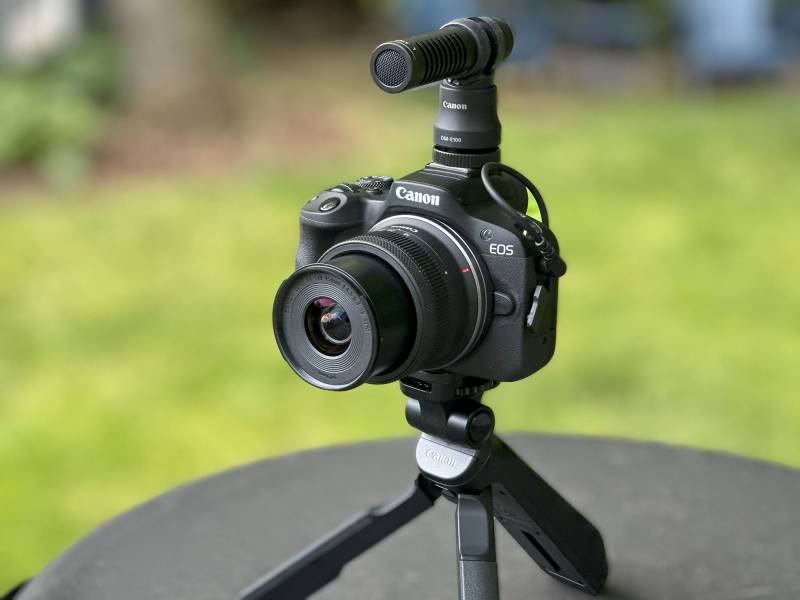
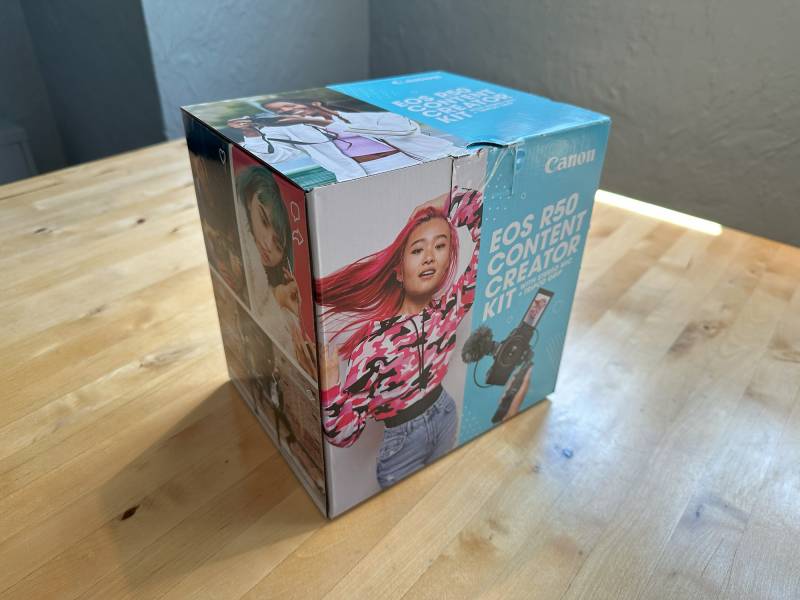
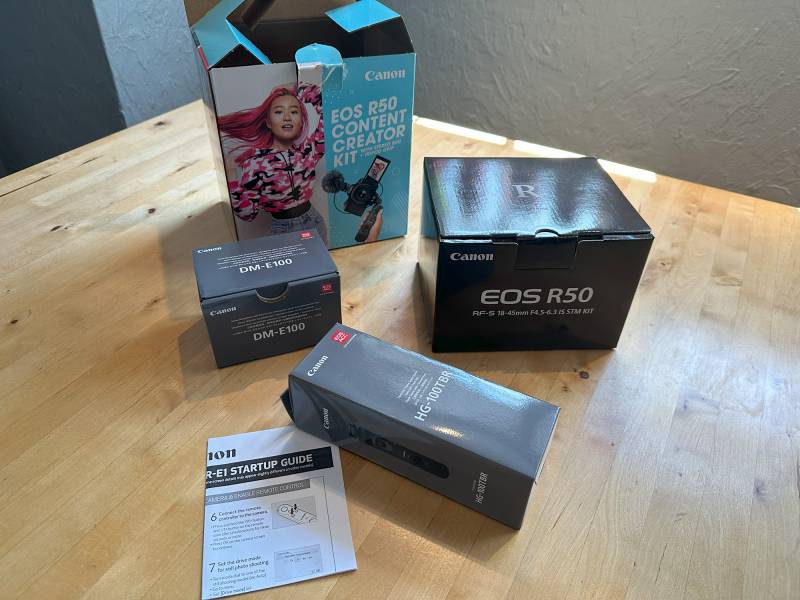
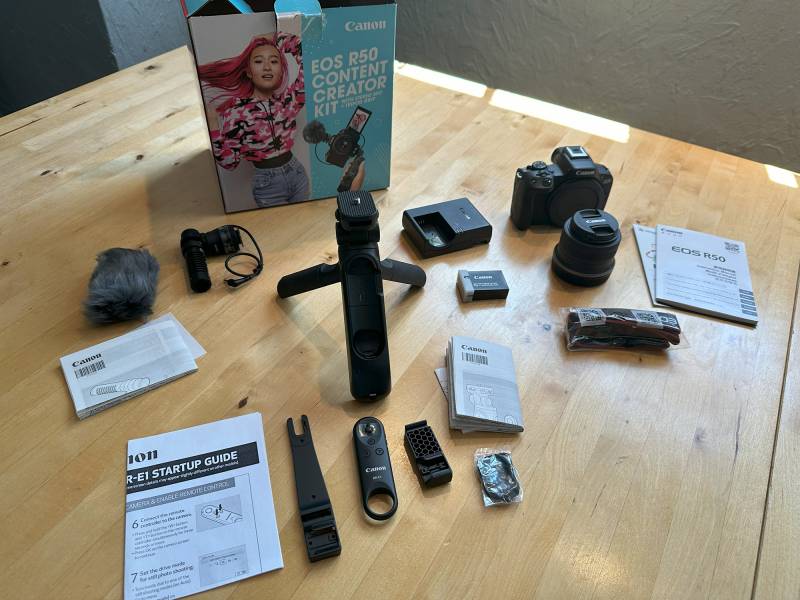

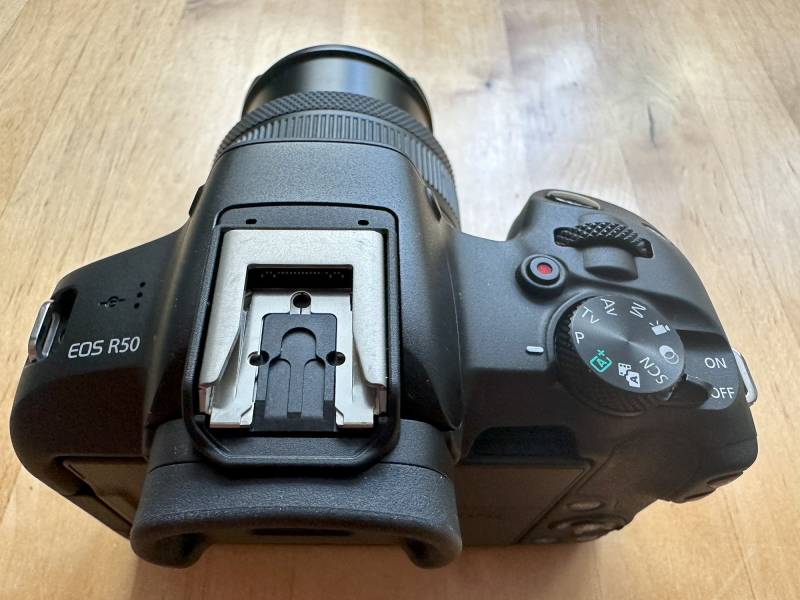




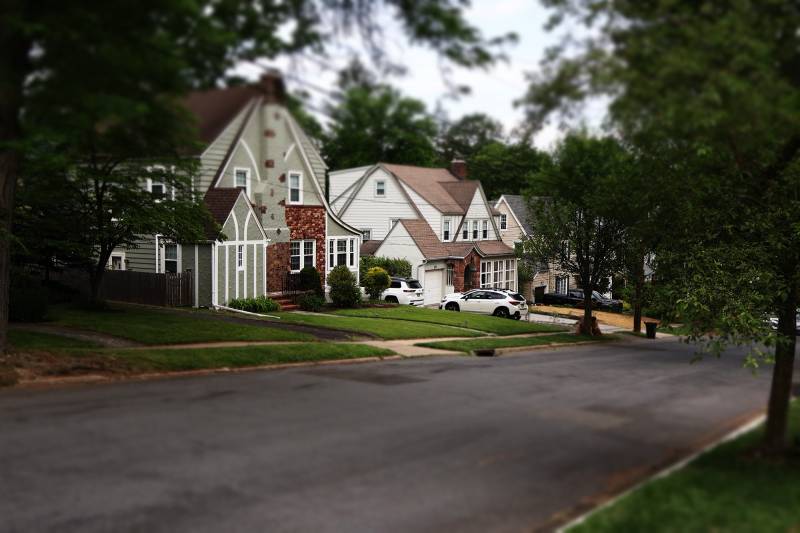
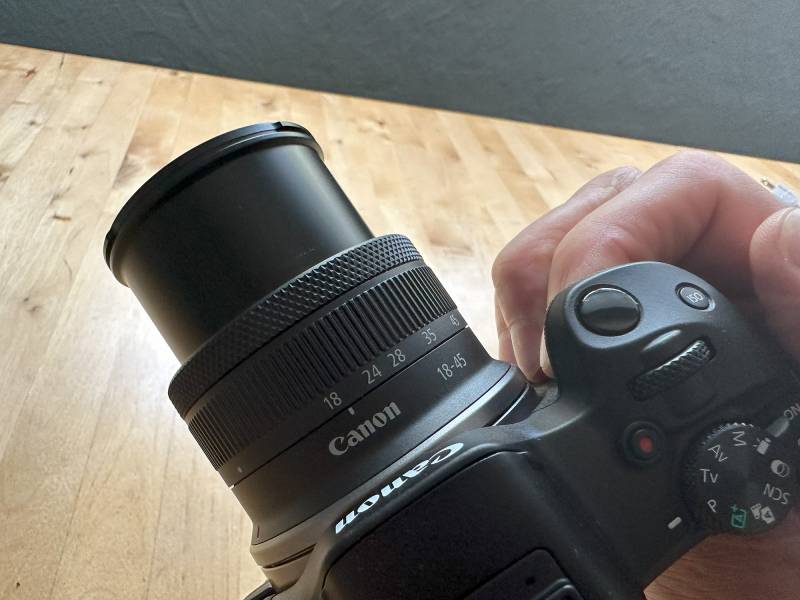
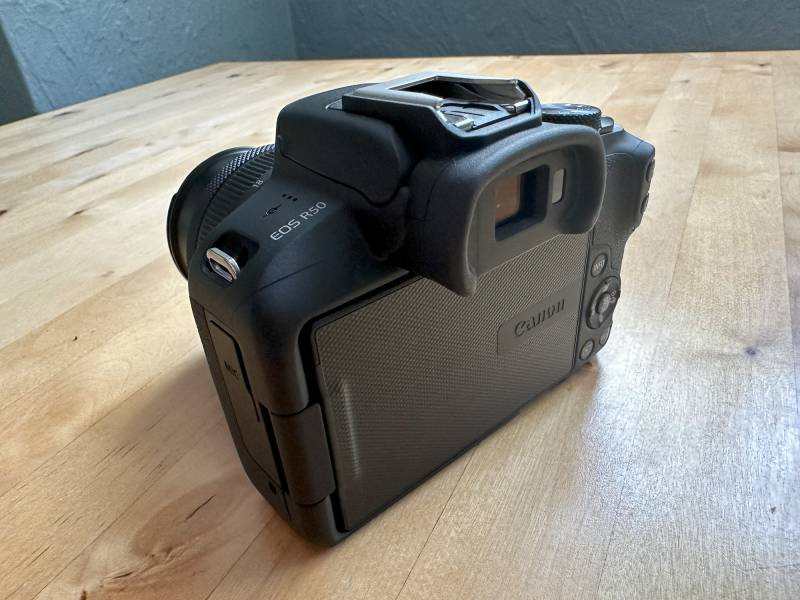
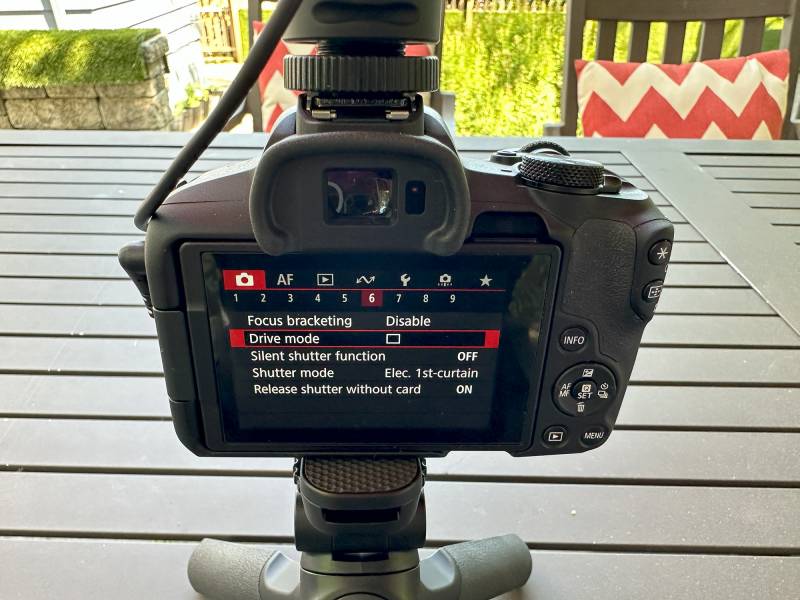
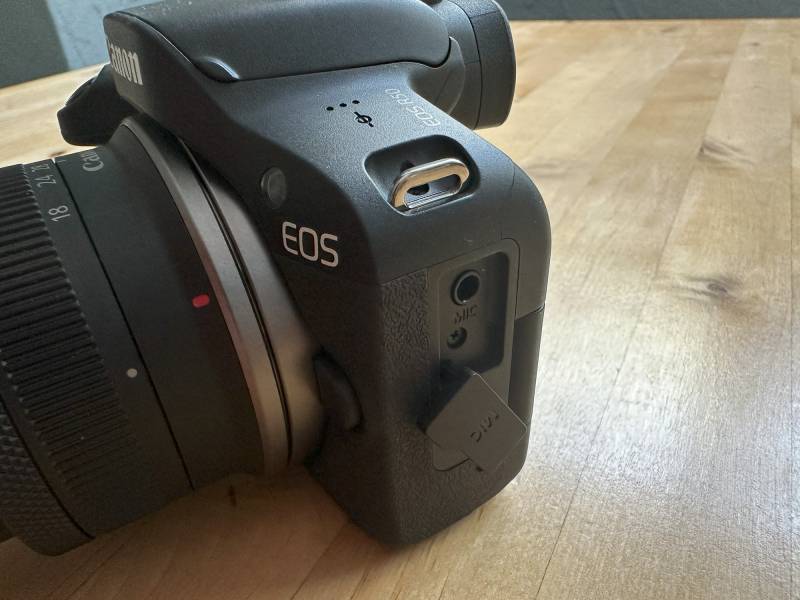
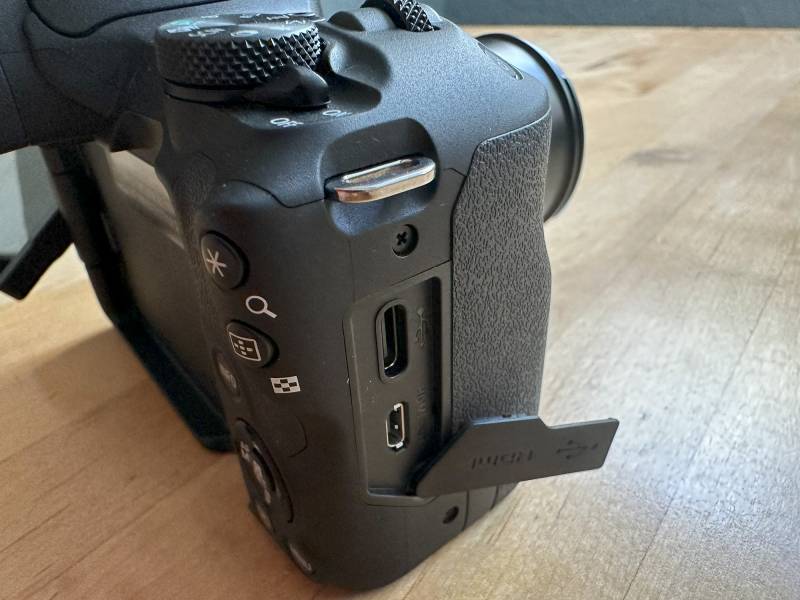
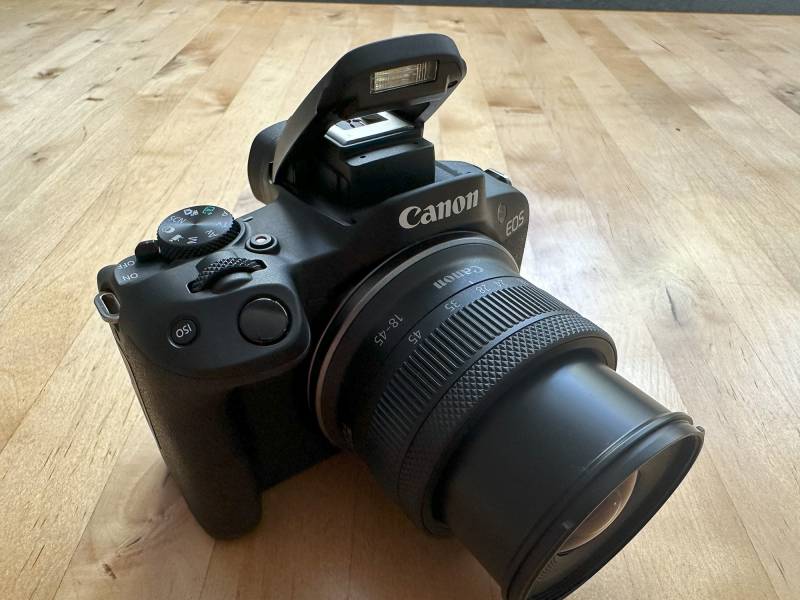
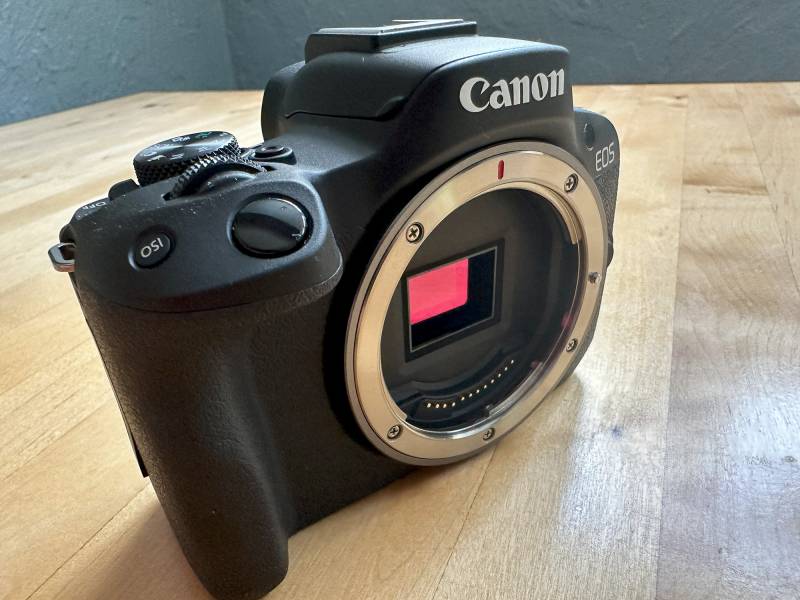
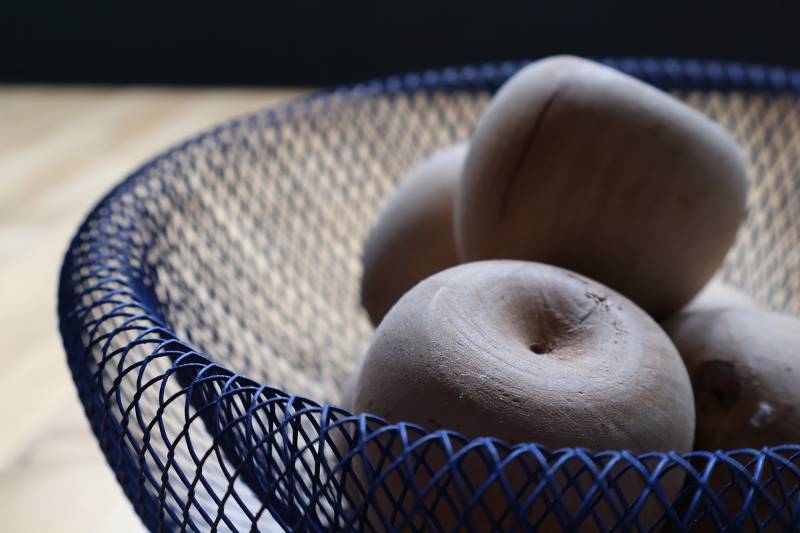
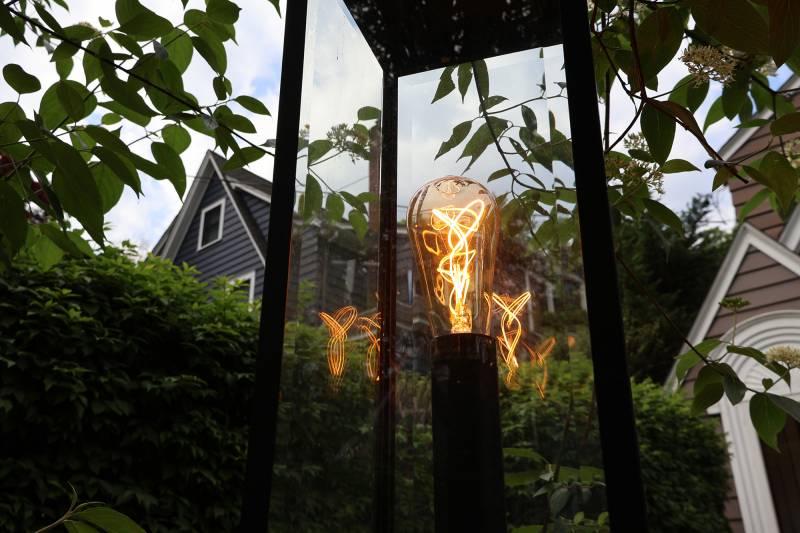

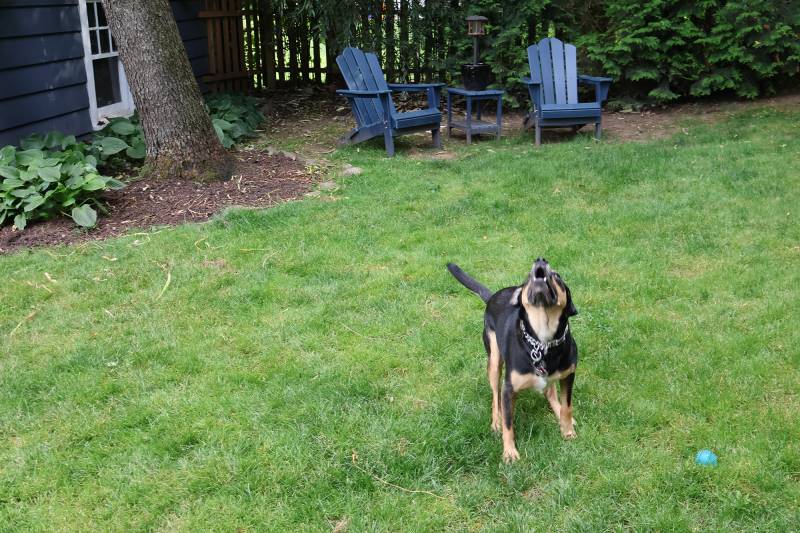
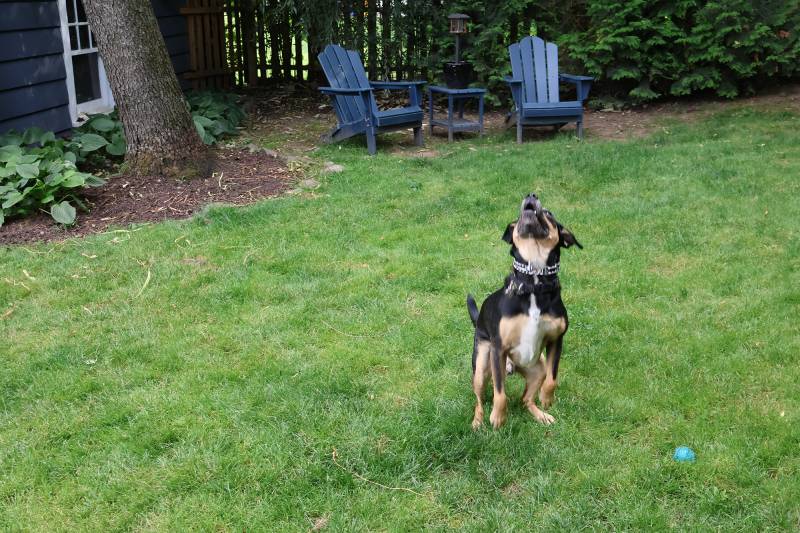
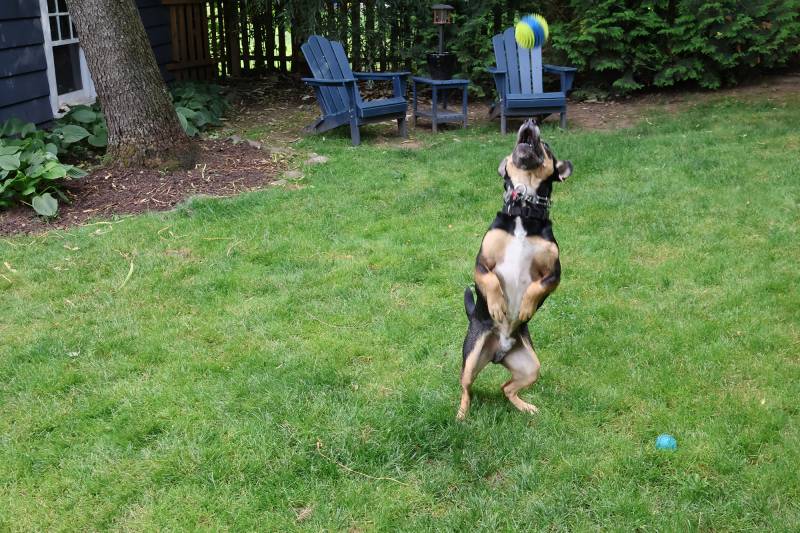
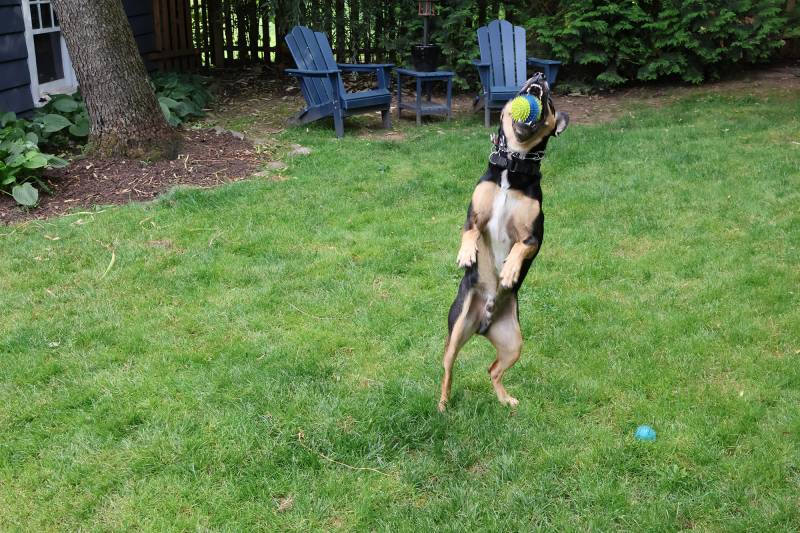
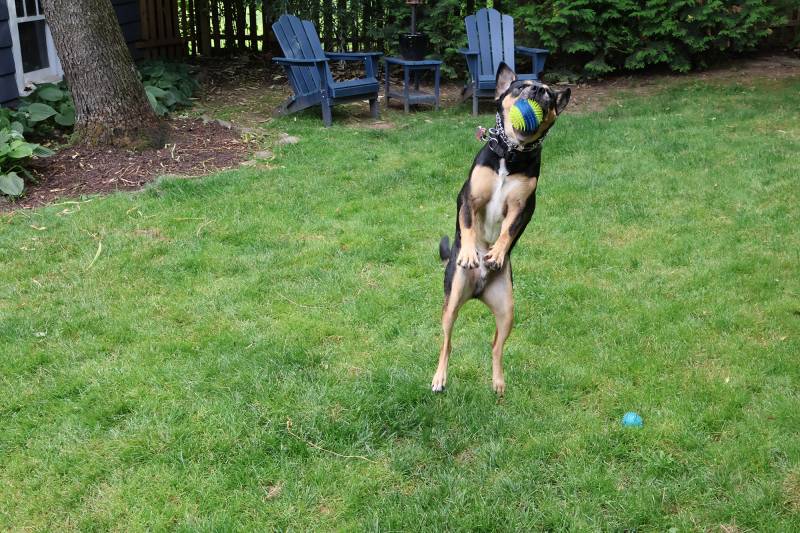

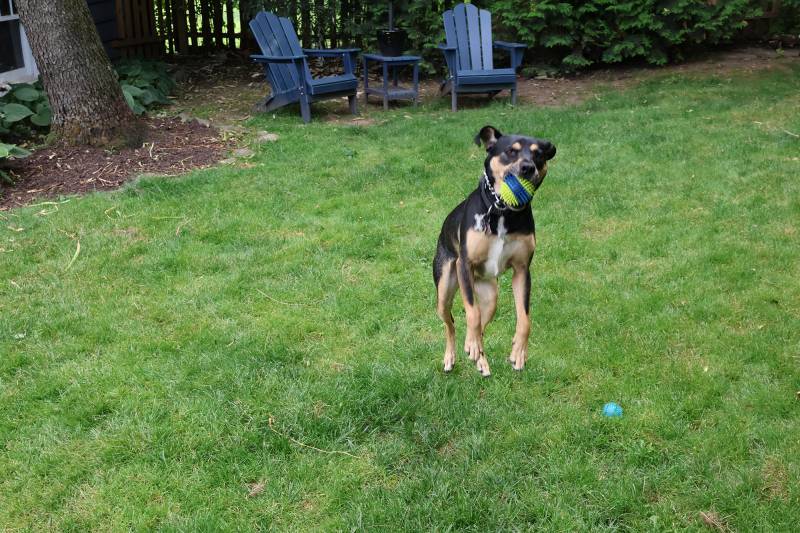










Be the first to comment on "Canon EOS R50 Content Creator Kit Review: An Inexpensive, Compact, Lightweight Powerhouse"